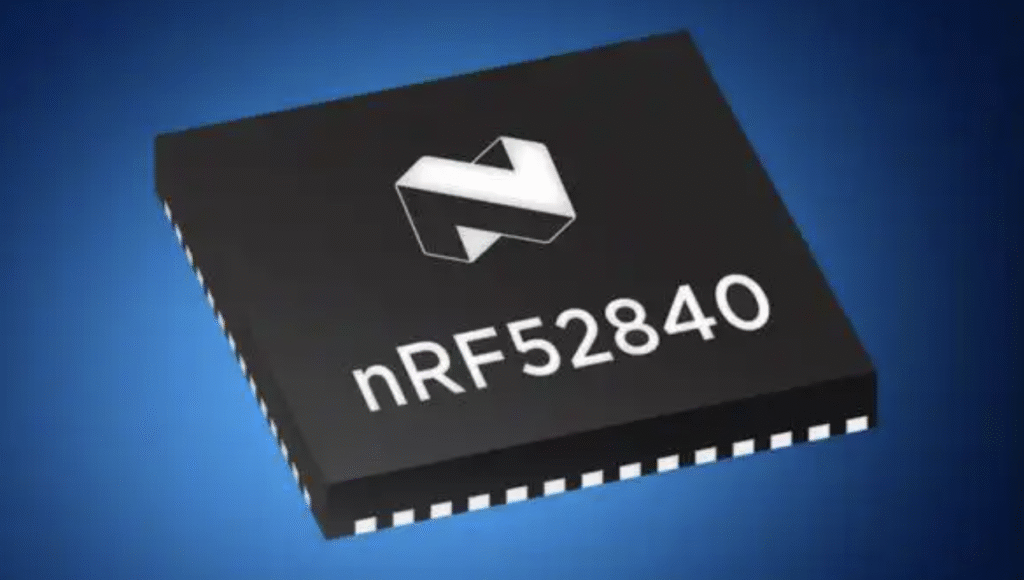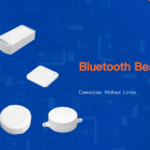
nRF 52840 Bluetooth Module: A First Look
The nRF 52840 Bluetooth module is a postage-stamp slab of Nordic silicon wrapped in a 3.5 mm QFN package, yet it crams a Cortex-M4F CPU, 1 MB of flash, 256 kB of RAM, and a multi-protocol 2.4 GHz transceiver that speaks Bluetooth 5, Zigbee, Thread, and proprietary Nordic stacks. In module form, it arrives pre-certified, pre-tuned, and ready to solder—an off-the-shelf shortcut from lab bench to production line.
Core Muscle: Cortex-M4F at 64 MHz
Inside beats a 64 MHz Cortex-M4F with hardware FPU and DSP instructions, capable of crunching floating-point filters or running TinyML models while keeping the radio humming. 1 MB of flash leaves room for both application code and over-the-air updates; 256 kB of SRAM lets developers buffer sensor streams without constantly paging external memory.
Radio Repertoire: From BLE to Thread
The transceiver delivers +8 dBm output and −95 dBm sensitivity, giving a link budget of 103 dB—enough to cross a football field line-of-sight. It supports Bluetooth 5 long-range (125 kbps coded PHY), 2 Mbps high-speed, and Angle-of-Arrival direction finding. Flip a firmware switch and the same hardware morphs into a Zigbee router or a Thread border router, making the module a true multi-stack Swiss Army knife.
Power Budget: Micro-amps in Deep Sleep
With the core halted and RAM retained, the module sips 0.3 µA; wake on RTC and you’re at 1.5 µA. A fully connected BLE event every second averages 40 µA at 3 V—enough to squeeze five years from a CR2032. The on-chip DC-DC converter automatically bypasses itself under heavy load, cutting peak current during +8 dBm transmissions.
Security Armoury
Hardware AES-256, SHA-256, and ECC accelerators sit alongside a true random number generator and ARM TrustZone-M. Flash regions can be locked during production, preventing read-out even under JTAG attack. Over-the-air firmware updates are signed with ECDSA and delivered via Nordic’s encrypted DFU protocol.
Peripherals Galore
Five SPI buses, three I²C ports, two UARTs, QSPI for external flash, and a 12-bit, 8-channel ADC mean you can drive displays, sensors, and motor drivers without external glue logic. USB 2.0 full-speed is baked in—plug the module directly into a laptop and it enumerates as a CDC serial port, no FTDI chip required.
Antenna Alchemy: Ceramic, PCB, or u.FL
Module vendors offer ceramic chip antennas for space-constrained wearables, PCB meanders for cost-sensitive toys, and u.FL connectors for external whips on agricultural gateways. All variants are pre-tuned and FCC/CE certified, saving months of anechoic chamber time.
Real-World Workhorses
A Copenhagen start-up uses the module to drive 400 Hz motor controllers for drone gimbals, leveraging the FPU for Kalman filters. A Melbourne brewery tags kegs with the same silicon, relying on long-range coded PHY to track pallets through stainless-steel walls. One hardware bill, two entirely different markets.
Roadmap to 6.0
Nordic has already validated Bluetooth 6.0 channel-sounding on the nRF 52840 silicon; a firmware update will unlock centimetre-level distance measurement without new hardware. The same radio will also support LE-Audio and Periodic Advertising with Responses, ensuring today’s design stays relevant for the next decade.
Conclusion: One Module, Many Lives
The nRF 52840 Bluetooth module is not just a radio—it is a self-contained computer that happens to speak 2.4 GHz. Whether you need a fitness tracker, a smart-light gateway, or a motor controller, it offers the muscle, security, and certified antenna to get there fast. Plant it on a PCB, flash your firmware, and you have joined the Nordic ecosystem—five years of battery life included.


